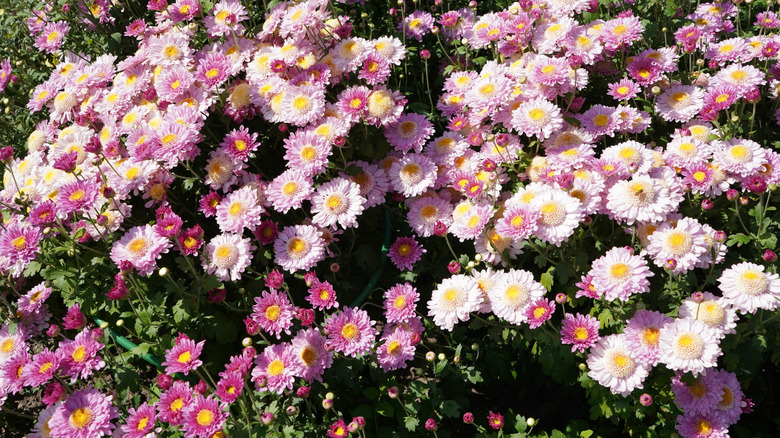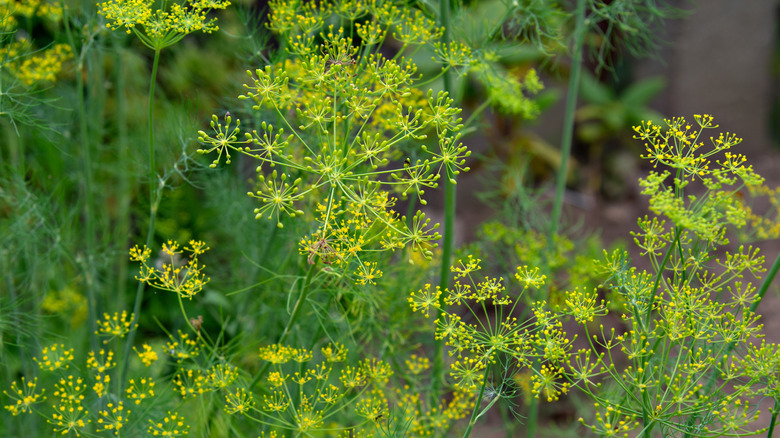The Common Kitchen Herb That Can Boost Mums When Planted Together
Chrysanthemums (Chrysanthemum indicum) are gorgeous flowers with blooms of white, pink, and orange that can breathe fresh life into a fall garden. They are an easy perennial to grow, reaching 2 to 4 feet tall and thrive in USDA zones 3 through 9. However, there are a couple of pests that can cause trouble for chrysanthemums. The aptly named chrysanthemum aphid (Macrosiphoniella sanborni) is one of them. This and other aphid species tend to feed on the leaves and flowers of chrysanthemums, which can affect the growth and overall wellbeing of the plant. Spider mites also tend to cause trouble for chrysanthemums, eating away at the plant tissue. Fortunately, there's a common kitchen herb that can help — dill.
Dill (Anethum graveolens) is an annual that can grow as tall as 5 feet and thrives in USDA zones 2 through 11. Besides being a beautiful and tasty addition to the garden, this herb also attracts ladybugs. But they aren't there just for show. Ladybugs eat spider mites and aphids. When planted in close proximity to each other, the dill can help attract just what the chrysanthemum needs to get rid of pests that could otherwise cause harm. This makes them great companion plants. As a bonus, the popular herb will also fill your garden with beautiful butterflies.
How to use dill as companion plants for chrysanthemums
You might be wondering what companion planting is, and how it benefits your garden. Companion planting means placing flowers, herbs, or other plants together strategically so they can support each other's growth. In this case, you would plant the chrysanthemums and dill close to each other so that when the ladybugs are attracted to the dill, they will also find spider mites and aphids on the chrysanthemums that they like to eat. Although there is scientific evidence that dill attracts ladybugs, the concept of companion planting is still largely anecdotal. Still, it's worth trying if you want to protect your chrysanthemums without using pesticides.
Companion planting is one of many tips for growing a healthy garden. It's relatively simple to plant dill and chrysanthemums together in your garden because of their similarities. Dill and chrysanthemums both thrive and grow best when planted in rich, fertile soil and located somewhere that they can get full sunshine. While it is recommended to thin the dill to be about 10 to 12 inches apart, chrysanthemums will need a bit more space – one to two feet– so be sure to leave ample space between them. Growing these two plants together can help protect your chrysanthemums while enhancing your garden's beauty — and even adding flavor to your meals.

